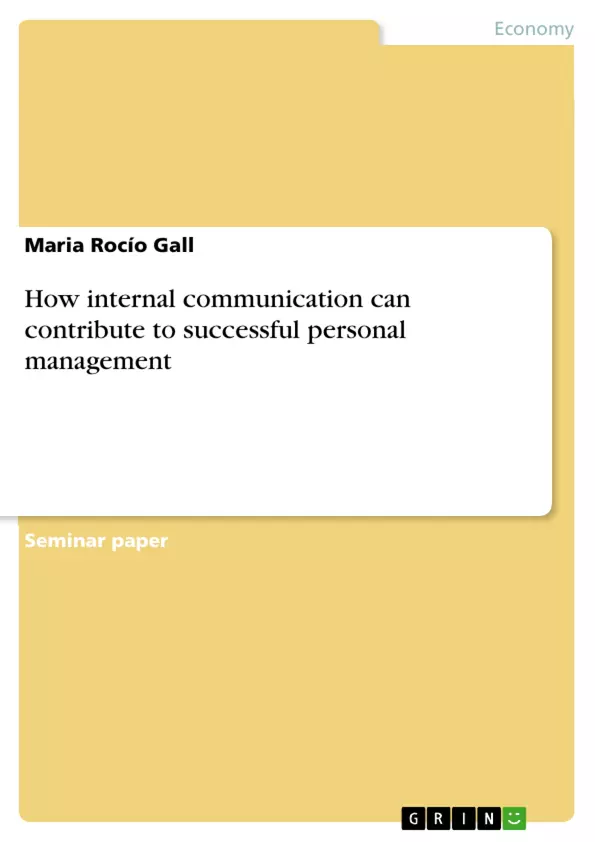1. Introduction
Nowadays with globalization human resources are becoming more and more important, less in the sense of their “performing activities “ (Gutenberg 1979) but rather in that of “dispositive activities” focussing on inventiveness, creativity and motivation. Most
problems in a corporation don’t originate from technical but from communicative causes.
Globalisation implies changes in corporation structures all over the world. Only active and fully motivated personnel can meet the challenges of mergers, hostile takeovers, acquisitions and changes of corporate structure due to new technologies. These changes require a basic improvement of corporate communication.
The aim of internal communication is to enable employees to see constant changes as an opportunity. Communication ought to be a continuous process.
To begin with, introductory explanations of human resource management and communication will be given. General conditions of successful communication will be described.
2. Internal communication
2.1. Human resource management explained
Human resource management consists in influencing the behaviour of subordinate employees. Human resource management must be aware of the fact that the human beings that are to be guided are no mere objects but personalities with ideas, moral concepts and interests on their own.
Inhaltsverzeichnis (Table of Contents)
- Introduction
- Internal communication
- Human resource management explained
- The management task of motivating employees
- Success in human resource management
- Leadership as a cost-factor
- Explanations of communication
- The process of communication
- Communication with employees
- Functions and aims of communication with employees
- Leadership in the process of communication
- Transmitting information to the members of the organisation
- Satisfaction of social needs
- Communication serves management
- Successful talk to employees
- Communicative competence
- Attention is the foundation of communication
- Question to start communication with
- Feedback
- Intercultural communicative competence
- Finding out about faulty communication and conflicts
- Conditions for successful communication
- Directives of communication as part of management principles
- Management, advice and training
- Trust
- Conclusion
- Summary
- Fazit
Zielsetzung und Themenschwerpunkte (Objectives and Key Themes)
The aim of this paper is to investigate how internal communication can contribute to successful personal management. It examines the role of communication in motivating employees, fostering a positive work environment, and achieving organizational goals.- The importance of internal communication in human resource management
- The role of communication in employee motivation
- The impact of effective communication on organizational success
- The challenges and opportunities associated with internal communication
- The relationship between leadership and communication
Zusammenfassung der Kapitel (Chapter Summaries)
- The introduction highlights the growing significance of human resources in today's globalized business environment, emphasizing the need for effective communication to address challenges and foster employee motivation.
- Chapter 2 delves into the concept of internal communication, exploring the key principles of human resource management, including motivating employees, achieving success, and understanding the cost-factor of leadership.
- Chapter 3 explores the role of leadership in the communication process, focusing on transmitting information to employees, satisfying social needs, and using communication as a management tool.
- Chapter 4 examines how to effectively communicate with employees, emphasizing communicative competence, recognizing faulty communication, and addressing conflicts.
- Chapter 5 outlines essential conditions for successful communication, including management principles, training, and the crucial element of trust.
Schlüsselwörter (Keywords)
The central focus of this paper is internal communication and its impact on human resource management. This includes concepts such as employee motivation, leadership, communication strategies, and organizational success. The paper explores how effective communication can contribute to a positive work environment and drive organizational performance.- Citation du texte
- Maria Rocío Gall (Auteur), 2009, How internal communication can contribute to successful personal management, Munich, GRIN Verlag, https://www.grin.com/document/151228



